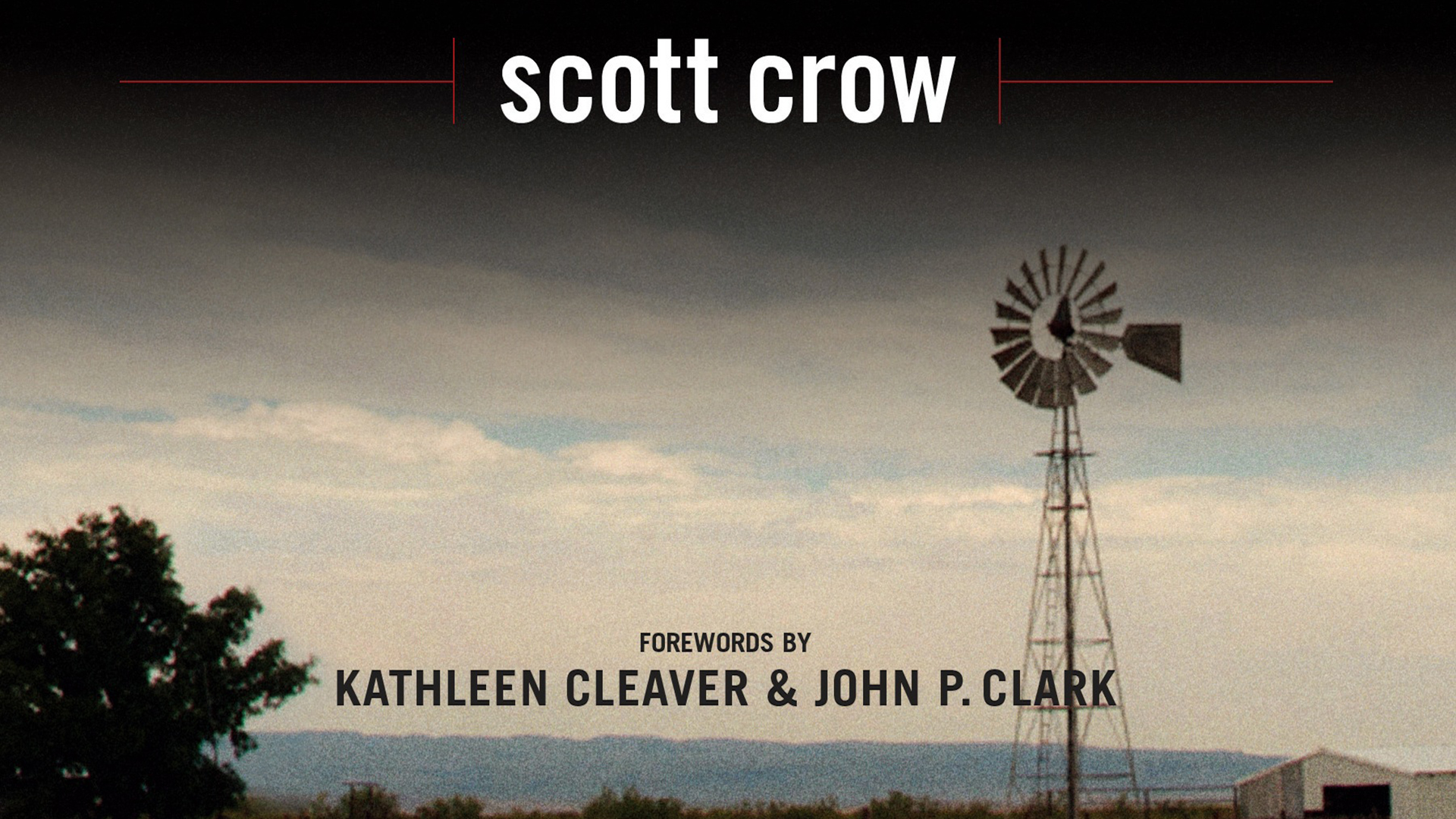
by Sasha
Earth First! Journal
June 26th, 2014
The following interview was first published in the spring edition of the Earth First! Journal, now available to view free online.
scott crow is a longtime anarchist political activist, political strategist and author based in Austin, Texas, and a founding member of the Common Ground Collective, an anarchist Hurricane Katrina relief effort. We caught up with scott to ask about his work with Dirty South Earth First! (DSEF!) and Stop Huntingdon Animal Cruelty (SHAC), as well as his thoughts on the state of the eco-resistance struggle today.
EF!J: Could you give us a little history of Dirty South Earth First!? How did it start, how did it go, and what lessons did you learn from your experience?
scott: DSEF! grew out of inspiration from the successes of the SHAC campaign, frustrations with the way the Earth First! groups in Northern California were handling the Redwood and Mattole forests campaigns, and our proximity to the decision makers of the MAXXAM corporation based in Texas, who owned Pacific Lumber. They were logging the last redwood trees in the whole world. The tallest, most majestic trees, thousands of years old, were being turned into lumber for shitty suburban houses for a few dollars. Ecosystems that took eons to develop were being stripped and clearcut at rates people in the logging industry had never seen before. MAXXAM and Pacific Lumber had nearly wiped the forests out in twenty years.
When Rod Coronado was released from prison in 2003 for Animal Liberation Front-related activities, he went to the redwoods to work on forest defense, but left due to frustrations with limited tactics and a lack of strategies by the people on the ground. I had been working on the same campaign since 1999, participating in logging road blockades and treesits around the redwoods and doug fir forests, and understood his frustration. Although the blockades and sits were beautiful (and in some cases impressively longstanding), the vibe on the ground was often very hippyish and the opposite of militant. Don’t get me wrong, there were committed and amazing people involved, but in the day-to-day it was often young people who were stopping by on their way to some music festival. There wasn’t “life is at stake” commitment. I’ll admit there’s something intoxicating in the beauty of the woods that just makes you…peaceful.
I know. It’s mesmerizing. Even as the Law Enforcement Officers are tearing up your camp or one of your comrades is being extracted violently out of a tree. But I was used to street militancy, and it was needed. The logging campaigns had gone on for a long time, but MAXXAM was clearcutting faster and faster. The trees were almost gone—literally. Logging continued while people were being arrested and forcibly removed from treesits. Many of us could see that they were going to cut what was left if we didn’t change directions.
Around the world, the SHAC campaign had been putting pressure on the executives and associates of Huntingdon Life Sciences (HLS), the largest contract animal testing company in Europe. A few of us were involved in the SHAC campaign in different cities across Texas. Some friends brought Rod to speak in Houston in 2003 for a weekend of action. That’s when he and I first met.
After his talk we all went around doing a few demos at executives’ houses. That’s when we hit on the idea that these same strategies and tactics could be used against MAXXAM and Pacific Lumber.
Scott Parkin, Nicole, Patrick, Ross, myself and Rod (who stopped participating after the first year) became the key organizers. The ideas quickly developed from there. At first we wanted to name ourselves something serious like Gulf Coast or Texas EF!, like we had done before, but instead the influence of The Simpsons and hip hop prevailed. In one episode of The Simpsons, Lisa joins a group called Dirt First!, and at the time the dirty south rap craze was in full effect, so Dirty South Earth First! aka Dirt First! was born. It was self-mocking and urban-oriented. I wrote most of the early anonymous action communiques under the pseudonym “whitebread” or “hooks.” Scott Parkin took the lead on the articles on DSEF! that appeared in the EF!J. That core of people organized the majority of events and actions.
EF!J: SHAC and DSEF! were similar in many ways. They didn’t appeal to corporate or government power, but recognized their own; they were decentralized; and they each focused on a single target, rather than a broader issue or bioregion. How did these similar models work differently for animal rights and environmental campaigns?
scott: SHAC was the first campaign I had ever been part of that operated with many explicit anarchist ideals in it. Others I had been in had operated on anarchist ideas in vague ways.
SHAC promoted autonomy, direct action, decentralization, affinity groups—and although never explicit, it was anti-capitalist. In its autonomy, it didn’t condemn nighttime actions or only promote above-ground actions. Any person or group could research the companies and decision makers who were part of HLS and take whatever non-violent actions they thought were appropriate for the goals. It was also the first campaign I knew of in the US that was explicit about shutting down a corporation, instead of negotiating for a kinder, gentler version to remain. Which I think is something we should think about again as political movements SHAC wasn’t about mass political movement-building; in fact, at times it was often decried by other animal rights or leftist groups. SHAC was incredibly successful in a short time for all the reasons stated. Different people and groups focused on more than just HLS directly. Anyone who did business with them—including banking, toilet paper, delivery services, communications, investors, anyone who was profiting from the exploitation—was a fair target.
Some of the companies were huge international ones like Bank of America or the NASDAQ stock exchange, while others were small players; but all of them helped HLS stay in business somehow. The SHAC campaign started to dismantle those systems brick by brick. Some companies capitulated after receiving a letter, while others slogged through legal and security battles. It was impossible for HLS to run a business if vendors refused to sell to them, or if delivery companies wouldn’t handle the animals, office supplies or documents, or if a bank refused to hold their money because it was tainted in the public’s eyes.
To compare effectiveness of strategies, look at Bank of America as an example. They had kept Big Green (NGOs) and grassroots groups at bay for decades in divestment campaigns. These environmental groups were only asking for crumbs really: slight, modest changes in corporate policy. When SHAC started to focus on BOA to divest completely of HLS stocks, they divested within, I think, two weeks. Activists targeted them all over the country in all of their branches.
It wasn’t worth it to them, or their toilet paper suppliers (laughs). HLS finally had to appeal to the Bank of Scotland, a state monopoly, to handle their banking. Otherwise they would have collapsed. No one else would touch them; they were toxic.
Another example was the Stephens corporation based in Little Rock Arkansas, which had invested over $30 million US to keep HLS afloat. They made media statements that they would never divest or give in to the SHAC campaign. They fought back hard. Stephens hired some of the first security agencies to intimidate and investigate SHAC. One of them was called Global Operations, a real shadowy outfit. They called people involved in the campaign terrorists in the media and took out full page ads making us out to be crazy and insensitive.
There was a week of actions in Little Rock targeting Stephens in 2001. It included home demos, teach-ins, vegan BBQs, and on the last day a demonstration at their offices downtown.
The whole city shut down. Bank of America boarded up windows at all of their locations and ATMs. Little Rock brought out their old riot gear from the ‘60s and called in all personnel. They were terrified of 200 animal rights activists due to the Stephens propaganda. We owned the downtown; we ran through the streets for hours being tear gassed, and having rubber bullets and concussion grenades shot at us. I was standing next to Josh Harper, a key organizer, when they targeted him from one foot away, shooting him point blank in the face with round after round. Then people were finally arrested. A week later Stephens folded. They lost millions overnight.
The SHAC campaign was still in full effect when we started DSEF!. Sometimes we had combo weekends of home demos and teach-ins with folks in both groups participating. Like the SHAC campaign, DSEF! wasn’t trying to build a mass movement. We had one goal: For MAXXAM to divest completely of Pacific Lumber and for them to stop all logging. We didn’t want less or more unsustainable logging. Daryl Cherney, EPIC (Environmental Protection Information Center) and others had long ago worked out transition plans for Pacific Lumber’s withdrawal.
The company just needed a reason to enact them. That wasn’t our goal, but we respected it. We wanted Pacific Lumber to stop immediately or it was going to cost them a lot of money to stay in business. DSEF! tried to mimic SHAC as far as being an international autonomous broad campaign since there were companies all over the US and Canada that did business with either MAXXAM or Pacific Lumber. It didn’t get nearly the traction of SHAC and evolved into a small group of people organizing consistently in Texas. We went after the executives at their offices, homes, golf courses, churches, synagogues, or any public place. Two of them moved out of million dollar homes to even more gated communities, including one of MAXXAM CEO Charles Hurwitz’s slimy sons.
We did research on all the shell corporations, officers and ways that Charles Hurwitz and MAXXAM (or MAXXSCAM as we referred to them) hid themselves and their money, including pouring over past lawsuits against them. Then we went after their smaller companies and decision-makers who weren’t directly related to Pacific Lumber. There were regular home demos day and night by people we knew and didn’t know.
In addition to those battles, there was the incredible blowback from people within the EF! movement. We were denounced by some California old guard factions as being too violent, reckless and controversial, although we never physically harmed anyone. Many of the most vocal wanted us to continue with passive resistance and entrenched tactics until the last redwood on the planet was cut. Our approach was much more militant.
Internationally there was a lack of interest. Most EF! groups wanted to focus on their local projects instead of coordinating something larger, which we understood. We weren’t being vanguardist, but just pushing the edge of where political action might go. The radical enviro movement had really lost its militancy and was comfortable in the forms of resistance like blockades and treesits. I’m not knocking those, but corporations and the state had adapted to them and expected them. When we stepped in, it was outside the EF! norm. Others had challenged EF! tradition before. Remember the redneck wilderness founders who wouldn’t let go of that and considered those that came later just “anarchists”? Something different had to be done, and so we did what we felt was needed. With our lack of resources DSEF! finally settled into two strategies: home demos and a treesit in a large urban park in Houston near Hurwitz’s house. The latter played well with the media, while the former was effective in putting direct pressure on executives. The treesit was started about two years into the project with support from Northcoast EF!ers, who were on the front lines in the redwoods fight. The treesit lasted for a few months, but the home demos continued until the campaign’s end.
DSEF! burned brightly and intensely for about three years before going dark in 2005. We folded from the combination of lack of wider support and the repression from state and private security entities—including a willing activist who became an FBI informant (one of five in my life!). Publicly MAXXAM wasn’t budging, but then shortly after our group ended, Pacific Lumber declared bankruptcy and they relinquished all the land. DSEF! was only partially responsible. Campaign “victories” like these are never clear and always messy “wins.” Valuable ecosystems had been saved, but tens of thousands of acres of wild habitats had been lost, leaving small shadows of their original selves.
EF!J: The summer of 2013 saw an exceptional amount of actions in defense of the wild, including treesits, protests, blockades, lockdowns, property destruction, sabotage and animal liberation. As someone who has had experience with diverse groups and tactics in the movement throughout the years, what are your thoughts on the current state of the radical environmental and animal liberation struggles in the United States?
scott: I absolutely agree. Coming out of the energy of the Occupy camps in the fall of 2011 or so, there has been a crescendo of various political currents building again. It has been inspiring to see reinvigorated radical environmental and animal liberation movements again with a full spectrum of actions all over the place. These two movements had largely become tentative, boxed in, and were at low points. For a brief time in the US there were mostly small actions or campaigns here or there that were engaging, but often isolated and short lived. Many radical tendencies that had been gaining ground were being co-opted or (mis)represented by the Big Greens with their reeking limited liberal reforms or diversion of grassroots energy into electoral politics and market solutions. Both of these tendencies didn’t make for much of a fight as climate change careened out of control and the Earth was still being pillaged for “resources” and used as a toxic dumping ground. Thankfully, people have been climbing out of that valley and are being joined by more. We have been seeing a new set of radicalization, new alliances and campaigns, and new energies while breaking out of those boundaries. The pivotal Mountaintop Removal campaigns battled this while also fostering radical grassroots activists in this period, and people like Scott Parkin (of DSEF! and Rising Tide) formed key bridges between the old guard and the new, and between NGOs and grassroots groups.
The question I ask is: Why were we having this lull? When taking the political view of rebellion we have to recognize that all political and cultural movements have moments of rupture with great revolutionary potential or intensity followed by periods where priorities and praxis are assessed, lessons are learned, legal fallout is dealt with, wounds are healed and psychological spaces for longer term projects are created.
The biggest factor to this period roughly 2003-2009 was the expansion in the farce of the “War on Terror” after the passage of the Patriot Act and AETA (Animal Enterprise Terrorism Act) combined with the FBI’s prioritizing of radical environmental and animal movements in what has been dubbed the Green Scare. The scope and scale of these wide-reaching investigations, coordinated nationwide raids, grand juries, infiltration and orchestrated media smear campaigns was largely unknown for a few years after the turn of the millennium. We just knew the targeting was everywhere; from underground efforts like the Earth Liberation Front and Animal Liberation Front to the grassroots above-ground struggles of the SHAC campaign, Sea Shepherd, Earth First! groups, people like Rod Coronado, Eric McDavid, Marie Mason, myself and countless others who faced some kind of repression or harassment. Remember too that more “mainstream” radical groups like Greenpeace, Ruckus Society, Rainforest Action Network and PETA were also being spied on and infiltrated. For many of us the unknown was paralyzing or disorienting at times.
To lesser degrees there were three other currents that deserve mention as influencing factors. The alternative globalization movements had crested after intense mass actions for a number of years. Also, there was the ending of almost 20-year Earth First! campaigns in Northern California to end old-growth logging in the US which had spawned hundreds of treesits and blockades, but also great weariness and burnout from people involved. Lastly, I think the psychological drain from the wars in Afghanistan and Iraq diverted a lot of focus for many activists from bioregional to larger international issues.
All of these overlapping and disparate currents collided, taking a huge toll on people, organizations and movements. It was a period of refocusing, healing, legal wrangling and assessment. It curbed the previous momentum and halted wide-scale actions in the US and Canada. But then the smoke cleared.
Now there is an upswing of
broader grassroots energy, campaigns, and groups with new networks and
people. The climate crisis itself and worldwide governments’ glaring
inaction and appeasement of corporate interests to the detriment of
ecosystems has been compelling people to focus on environmental issues
again. It is our lives we’re talking about. As I mentioned earlier, I
think it should be noted that EF! as an autonomous movement had waned
mid-decade, which has happened before in EF! history at the end of long
campaigns. Rising Tide North America (and internationally) really held
it down during the lull, slowly building a network of autonomous
collectives and outposts focused on climate issues and frontline
communities being affected by them—like the mountaintop removal
campaigns. It wasn’t absolutely separate from EF!. In some cases it was
the same, like EF! 2.0. And I think the EF! Journal did a good job of
continuing to disseminate information and continuing the storytelling of
these localized issues when the rest of the world wasn’t. These pieces
really helped provide a springboard for newer anarchists or radical
individuals and environmental groups to bounce from once people came out
of the Occupy movements. I would even argue that the recent overlapping
grassroots environmental movements are more diverse in addressing
climate issues, environmental racism, indigenous autonomy and
solidarity, as well as the complex issues of globalization, capitalism
and civilization as we currently live in them.






